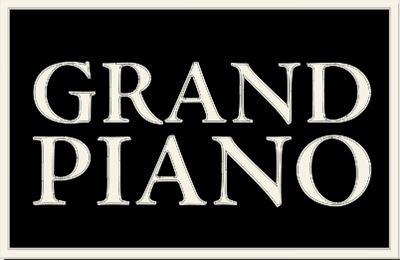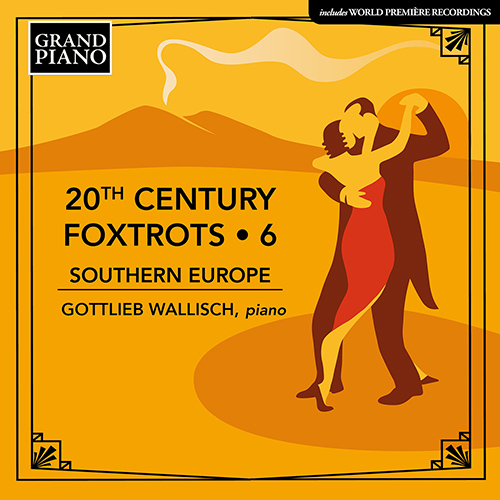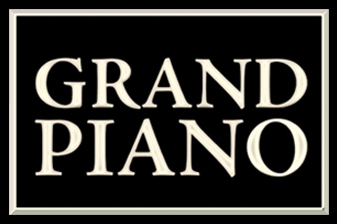
Victor De Sabata (1892 - 1967)
Victor de Sabata was born into a musical family: his father was a singing teacher and may have acted at some point as a chorusmaster for La Scala, Milan. Recognising Victor’s precocious musical talent, the family moved to Milan when he was eleven, and here he entered the Conservatory, studying violin, piano and composition and graduating in these subjects cum laude when he was eighteen. His music was swiftly taken up by conductors such as Tullio Serafin, at this time musical director at La Scala in succession to Toscanini, and Walter Damrosch, the conductor of the New York Symphony Orchestra. At the age of twenty-four, de Sabata was commissioned to compose an opera for La Scala: Il macigno was produced there in 1917. (de Sabata subsequently revised this work and it was re-presented at Turin under the title Driada in 1935.) Henceforth he was to pursue a twin career as a virtuoso conductor and for some time as a composer.
In 1918 de Sabata was appointed as chief conductor at the Monte Carlo Opera, a post that he was to hold until 1930. Here he conducted the first performances of Ravel’s one-act opera L’Enfant et les sortilèges in 1925 and the the local première of Puccini’s La Rondine. Toscanini conducted de Sabata’s symphonic poem Juventus shortly after its first performance in Milan in May 1919, and was very helpful professionally to the young musician, whose fame as a composer and as a conductor led to his debut in the USA in 1926. Following several months with the Cincinnati Symphony Orchestra during 1929, de Sabata made his debut at La Scala, Milan in February 1930 conducting Puccini’s La fanciulla del West.
From 1930 to 1953, when he was forced by ill-health to retire prematurely, de Sabata was to serve as chief conductor at La Scala. In December 1930 he conducted Wagner’s Tristan und Isolde for the first time there, becoming particularly associated with this work, which he conducted at the Bayreuth Festival in 1939. His pre-war career was concentrated predominantly in Italy, where he recorded several works with the Turin Orchestra of Italian Radio during December 1933, including his own Juventus. He led the La Scala company on a highly successful tour to Germany in 1937, with performances in Munich and Berlin, sound fragments of which have survived (Aida in Berlin), and was also a much-admired guest conductor at the Vienna State Opera during the pre-war period. With the Berlin Philharmonic Orchestra he made a highly distinguished series of recordings in 1939, the repertoire of which included Brahms’s Symphony No. 4, Richard Strauss’s Tod und Verklärung, Kodály’s Dances of Galánta, and Respighi’s Feste romane. These powerful and energetic interpretations, highly typical of de Sabata’s musical style, have rarely been out of the catalogue.
After World War II de Sabata was the first conductor from the German-Italian Axis to appear in London, where he made a tremendous impact in 1946. He conducted the London Philharmonic Orchestra in a complete cycle of the Beethoven symphonies and also recorded with the same orchestra a powerful if idiosyncratic ‘Eroica’ for Decca, as well as several shorter works. He went on to conduct the Chicago and Pittsburgh orchestras in the USA, and in March 1950 he directed the New York Philharmonic Orchestra in several memorable concerts which have survived as sound recordings. In 1950 he once again led the La Scala company to international triumph, this time at the Edinburgh Festival with Verdi’s Falstaff.
Although de Sabata himself was not an enthusiastic recording artist, making just a few studio recordings in Italy for instance in the immediate post-war period, many of his operatic and concert performances from this time were captured informally using new recording technologies. Thus recordings of his complete La Scala performances of Falstaff with Mariano Stabile (1951), Tristan und Isolde with Gertrude Grob-Prandl and Max Lorenz (1951), and Verdi’s Macbeth with Maria Callas and Enzo Mascherini (1952) have been published. Fragments from his 1949 La Scala performances of La Bohème and Andrea Chénier have also survived. In 1953 de Sabata was persuaded by Walter Legge of EMI/Columbia to conduct the forces of La Scala in what was undoubtedly one of the finest operatic studio recordings of the period: Puccini’s Tosca with Maria Callas, Giuseppe di Stefano and Tito Gobbi. The conductor’s perfectionism was well illustrated by his insistence on making over twenty takes of the first act finale alone.
Shortly afterwards de Sabata suffered the massive heart attack that prompted his withdrawal from conducting, although he did record Verdi’s Requiem for Legge with La Scala forces during the following year, 1954, and remained as artistic director of La Scala until 1957, making his last public appearance as a conductor at Toscanini’s funeral in 1957. He spent the remainder of his life in seclusion, dying ten years later. de Sabata was a legend among orchestral players for his ability to play every instrument and for his preference for conducting from memory. As a composer his works were notable for their rich orchestration and structural sophistication, very much in the style of Richard Strauss. His conducting thus combined high levels of technical ability with interpretative mastery and the results were consistently exciting, as both his studio and ‘live’ recordings fully demonstrate.
© Naxos Rights International Ltd. — David Patmore (A–Z of Conductors, Naxos 8.558087–90).


 Grand Piano has gained a reputation for producing high quality recordings of rare keyboard gems. Dedicated to the exploration of undiscovered piano repertoire, the label specialises in complete cycles of piano works by many lesser-known composers, whose output might otherwise have remained unknown and unrecorded.
Grand Piano has gained a reputation for producing high quality recordings of rare keyboard gems. Dedicated to the exploration of undiscovered piano repertoire, the label specialises in complete cycles of piano works by many lesser-known composers, whose output might otherwise have remained unknown and unrecorded.






